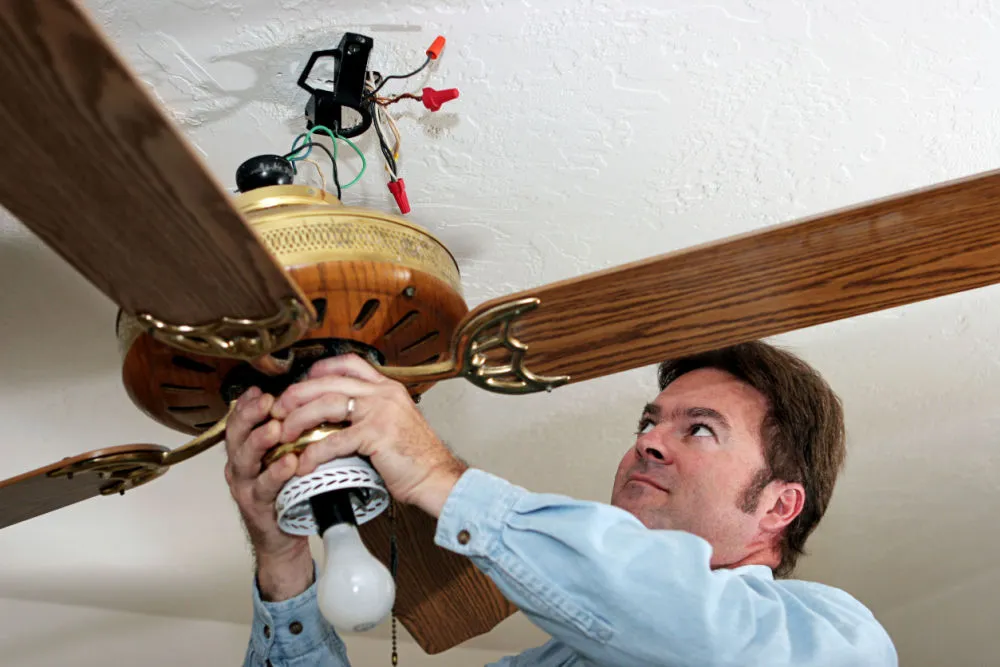How To Dispose Of Ceiling Fans? Ceiling fans are fantastic additions to our homes. They help circulate air, keep us cool during hot summers, and can even reduce heating costs in the winter by distributing warm air. But what happens when your ceiling fan reaches the end of its lifespan or you decide to upgrade to a new model? Proper disposal is crucial to minimize environmental impact and ensure that the materials are handled responsibly. In this article, we’ll guide you on how to dispose of ceiling fans in an environmentally friendly and safe manner.

Understanding the Components
Before you embark on the disposal process, it’s essential to know the key components of a typical ceiling fan:
- Motor and Housing: This is the core of the fan, containing the motor that powers the blades. It’s typically made of metal and sometimes includes copper wiring.
- Blades: Ceiling fan blades are typically made of wood, plastic, or a combination of materials.
- Mounting Hardware: These are the screws, brackets, and other hardware used to attach the fan to the ceiling.
- Light Fixtures: Some ceiling fans come with built-in light fixtures that contain glass or plastic shades.
- Electrical Components: Ceiling fans have electrical components, including wiring, switches, and capacitors.
Now, let’s explore the responsible disposal options for each of these components.
Disposing of Ceiling Fan Components
1. Motor and Housing:
- Recycling: Many recycling centers accept metal components like the motor and housing. Ensure you remove any non-metal parts and clean the metal components before recycling.
2. Blades:
- Reuse: If the blades are in good condition, consider repurposing them for DIY projects, such as making decorative wall art or even outdoor furniture.
- Recycling: Depending on the material, you may be able to recycle the blades. You can often repurpose or recycle wooden blades, but recycling plastic blades may pose more challenges.
3. Mounting Hardware:
- Reuse: Mounting hardware can often be reused for other projects or when installing a new fan.
4. Light Fixtures:
- Reuse: If the light fixture is still in working condition, consider donating it to a local charity or secondhand store.
- Recycling: You can recycle the metal parts of the light fixture at your local recycling center. The glass or plastic shades are often more challenging to recycle but can sometimes be repurposed.
5. Electrical Components:
- Recycling: Take any copper wiring, switches, or capacitors to your local recycling center. Copper wiring is highly recyclable and valuable.
Disposing of the Entire Ceiling Fan
If you’re looking to dispose of the entire ceiling fan as a unit, you have several options:
- Municipal Bulk Pickup: Check with your local waste management or municipality for scheduled bulk pickup days. They may accept large items like ceiling fans.
- Recycling Centers: Some recycling centers are equipped to handle bulk items. Call ahead to see if they can accept your ceiling fan.
- Retailer Take-Back Programs: Some home improvement stores or fan retailers have take-back programs where they accept old fans for proper disposal when you purchase a new one. Check with your local stores to see if they offer this service.
Recycling Metal Components
If you’re looking to recycle metal components like the motor and housing, ensure you follow these guidelines:
Responsible Disposal of Fan Blades
- Remove non-metal parts like blades and electrical components.
- Clean the metal components to remove dust and dirt.
- Check with your local recycling center to confirm they accept metal items.
When disposing of ceiling fan blades, consider the following:
- For wooden blades, check if they can be repurposed for DIY projects or furniture.
- For plastic blades, check with local recycling centers or waste management to see if they can be accepted.
Read too: How Do Rats Get In The Ceiling
Conclusion: Eco-Friendly Disposal Matters
How to dispose of ceiling fans? Properly disposing of ceiling fans is not only environmentally responsible but also contributes to recycling efforts and reduces waste in landfills. By separating and recycling various components and reusing what you can, you’ll play a crucial role in ensuring a sustainable future. So, the next time you replace your ceiling fan, take the time to dispose of it in an eco-friendly way, knowing you’re making a positive impact.